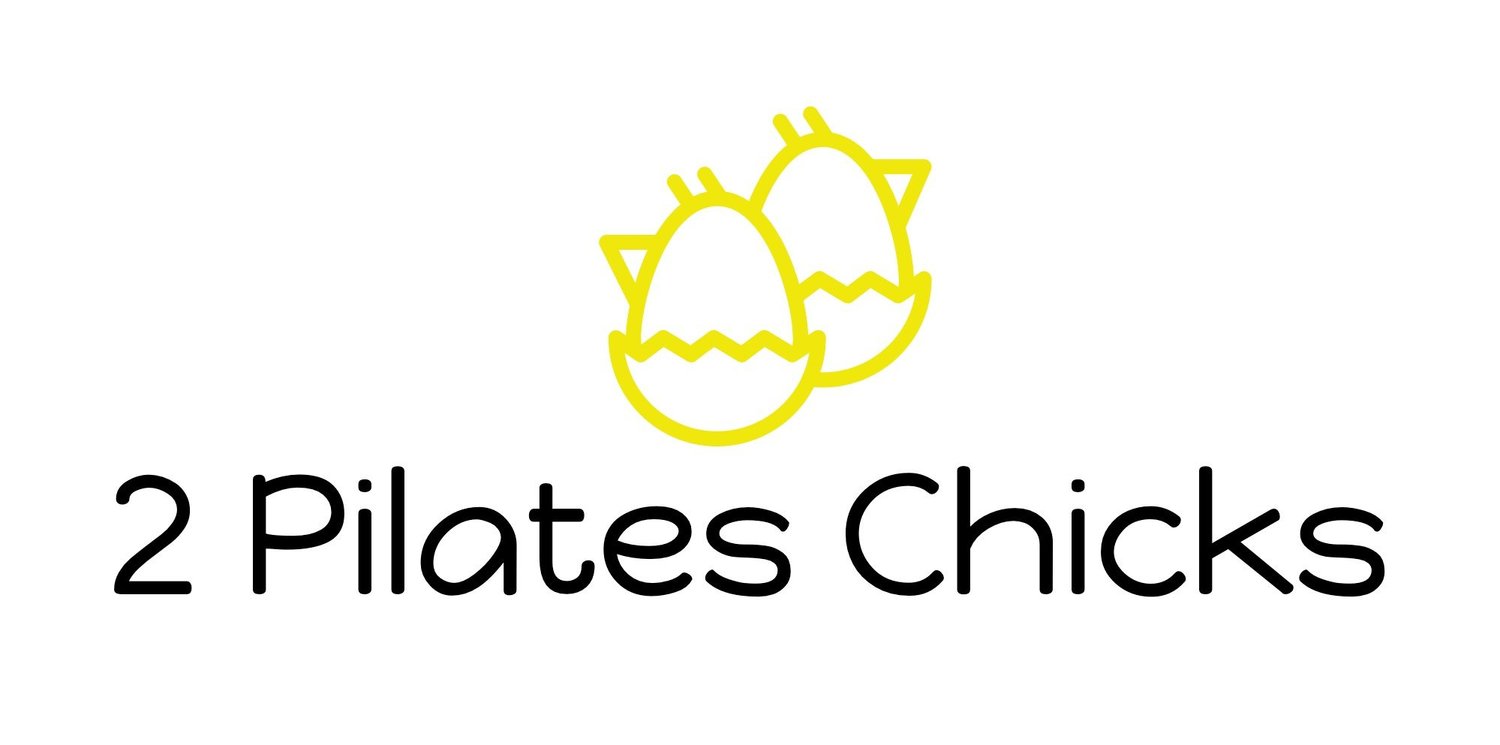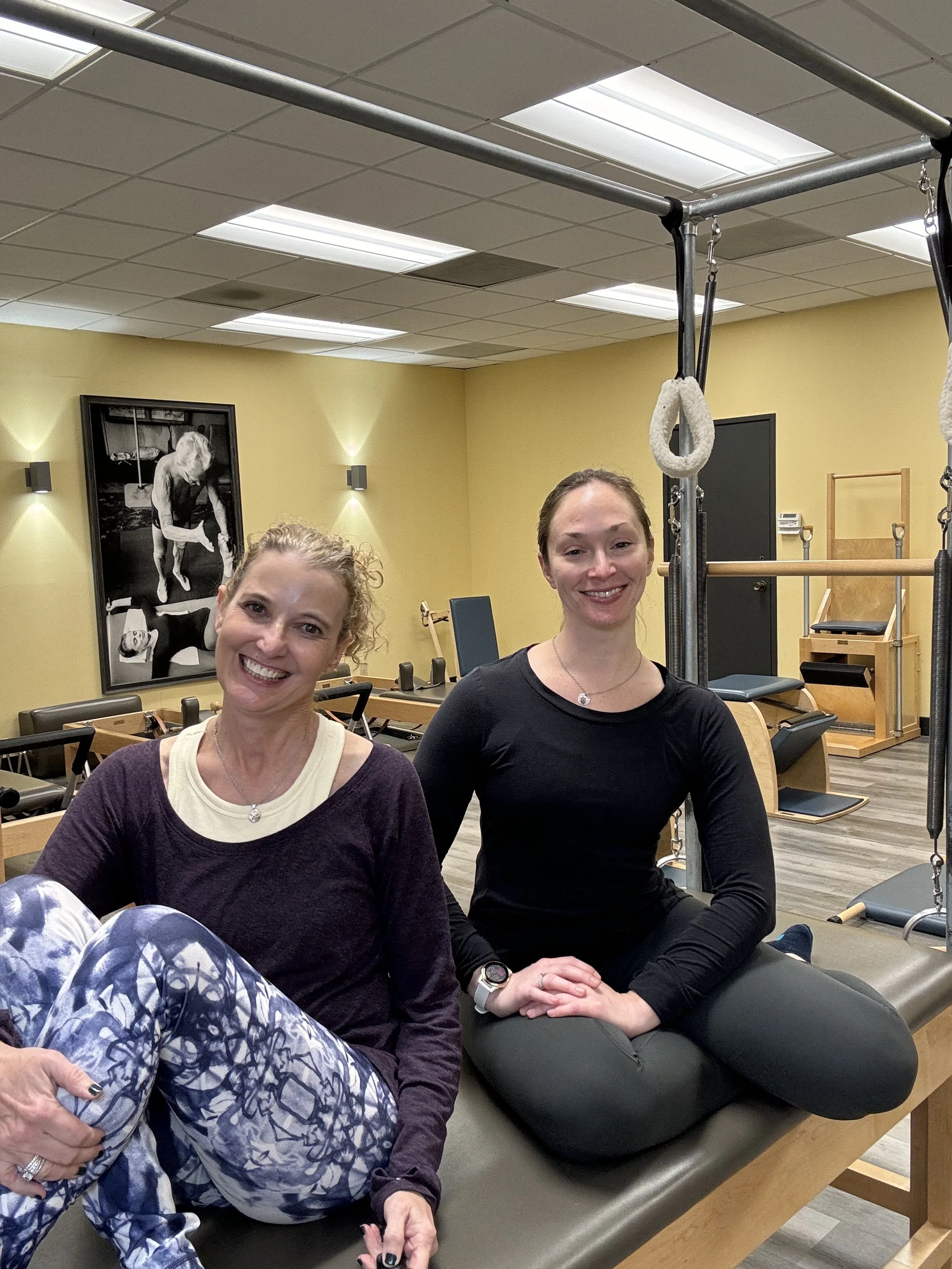What are the realites of teaching Pilates
What are the realities of being a Pilates teacher? What happens once we leave our teacher training programs and begin our careers teaching Pilates?
Our podcast “The Realities of Teaching”, discusses all the other elements of a Pilates career that we must be aware of, in addition to teaching clients.
Many new teachers leave teacher training programs assuming they will get hired to a studio or gym, be scheduled with new clients, and simply start teaching. Our training programs focus deeply on learning all the exercises, transitions, precautions, contraindications, and anatomy. Only once we start teaching do we realize everything else that is also necessary to build a Pilates business.
So what are all the other aspects of teaching Pilates besides "just" teaching Pilates?
1. Teaching Venue and Business Model:
What venue do we want to teach in?
What style or environment works best for us?
Depending on the environment we teach in there are different responsibilities, benefits, and challenges of each type of setting. We can teach Pilates in many different types of places such as in a gym or fitness center, private club, boutique studio, physical therapy clinic, or group class studio. In each of these settings, there are different positions such as the studio owner, manager, independent contractor, part-time employee, full-time employee, or renting space as our own business in someone else's studio.
While many teachers think they want to be a manager or studio owner, these roles come with many more responsibilities and liabilities beyond working with clients. Owning a studio can be an amazing venture, but we must know the local and state laws that dictate what insurance is needed, how to file business and income taxes, if teachers can be independent contractors or if they must be hired employees, and what we must provide for each employee or contractor. Studio owner expenses include equipment rental or purchase, insurance, equipment maintenance and repair, and studio cleaning. Studios may also need to provide supplies such as towels, small props, cleaning sprays, wipes, kleenex, and bathroom or water services. We also have to decide what other services we want our studio to offer for client experience. And finally, studio owners must provide a sales system (POS system), possibly a scheduling system, and a website along with any other overhead fees and utility charges to keep the space in business.
It can be an amazing experience to be our own boss, but we also must be aware of everything that includes beyond simply teaching our clients Pilates. It is important for all teachers to try teaching in different settings and different studios to find the best fit for each of us. From each different environment, we can learn new things, finding out what does and doesn't work for us as we move forward in our careers.
2. Building Clientele and Scheduling:
How do we get our first/new clients?
How do we create a teaching schedule?
Many studios will hire teachers for specific times or days that need filling. This could be for private clients who are requesting specific times, classes that are newly on the schedule, subbing for another teacher who is on leave, or taking over sessions from a teacher who has left that studio.
The reality of building clientele and a new schedule is we can’t be picky. As new teachers, we have to take whatever we can and build from there. We might start with early mornings, late evenings, and weekend sessions. When we're hired for specific hours in a studio, we are agreeing to fulfill those session times.
We all want a schedule that works perfectly for us, but it takes a long time to build up client consistency. Teaching Pilates is not a typical 9-5 job with a consistent schedule, regular holidays, and paid time off. It is a service career. Our schedules must factor in our customers' (clients') schedules.
The longer we teach the more we can notice the seasons in teaching, the busy seasons, and the lighter seasons when clients are often traveling and unable to come to their sessions. It can be helpful to schedule our own vacation times during the lighter seasons when we won't be canceling as many sessions or classes since many clients will also be traveling. Even once we develop a relatively consistent schedule, it will still always change. Similarly, once we think we've built a schedule of recurring clients, our clients will change out as well. Clients get sick, travel, move, and have lives of their own causing them to regularly cancel, reschedule, and forget their sessions.
Just because clients cancel their sessions doesn't mean they don't care about their Pilates. It can be quite irritating and frustrating for teachers, and sometimes it feels like it's a critique of our abilities, but we can't take it personally. Our clients all have various needs in their own lives, and we have 30 different clients' schedules to work around. The management of our teaching schedule is not only about what hours and days we want to teach but also about accommodating our clients' lives to an appropriate amount.
Some clients will late cancel a lot and some try to argue the cancellation policy. We can be understanding about emergencies and last-minute issues that arise for some clients, but we must also be strong in our boundaries of rescheduling rules and late cancellation charges in order to maintain our businesses.
Especially for teachers who teach private sessions, scheduling clients is an ongoing and constant aspect of our careers. Clients will text, call, and email to reschedule or cancel at all times of the day. We must learn to set boundaries to only respond to messages at certain times of the day, our "business hours", in order to not be available all the time. Clients may message us during our off hours when we're out of the studio or even on vacation with family. While it is important to take the time to answer clients promptly, we can also designate our business hours when we will follow up on the administrative work of answering emails and scheduling sessions. Creating a separation of work and home is helpful to minimize feeling overwhelmed by the constant shuffling of client schedules.
When we feel like we have a full schedule it will still always change, and for this reason, it is helpful to create a waiting list or to know what clients are available to slide times around or want different times or extra days. When certain slots become available one week we can either slide other clients, get a waiting list client scheduled, or take the free time to get caught up on admin work.
Schedules naturally change over time, so when a client releases a recurring timeslot that we don't want to teach anymore, we don't have to fill it up. As we teach longer and become established teachers we can become more selective to find what better works for us in order to avoid burnout and maintain longevity in our careers. At first, however, we really do just need to put in the hours, experience different environments, try teaching various types of clients and classes, and teach at all times of the day.
3. Marketing and Self-Promotion:
How do we advertise ourselves?
Each of us must be our own salespersons. Even though most of us would prefer to simply show up to the studio and have clients waiting for us, we must advertise in order to find our clients. The best advertisement is referrals from clients, teachers, or other fitness/healthcare/wellness and allied professionals in our network.
We should each have a website and social media presence that can describe our background and teaching style even if we're not updating it regularly. Having even a simple online presence is beneficial because new clients may look us up before starting sessions and it's much more professional to have something available online for them to find. An online presence lends legitimacy to studios and teachers.
Social media has taken Pilates marketing to a whole new level over the past decade. For some teachers, a social media presence can become a full-time job, posting new videos every day, information for clients, and connecting to new people. It can be challenging to manage on top of teaching a full schedule of clients, but we each have to decide how important our social media presence is for our own business. Some teachers find new clients online, but honestly, it is not the most important part and not where we will find most of our clients.
Word-of-mouth referrals and the local community are where most clients will come from, and these are generally the clients that will be consistent and respectful.
4. Planning, Payments, and Finances:
What is the administrative work we have to do as Pilates teachers?
There is a plethora of minutia for us to work on and manage in a Pilates career whether we teach privately, in a group setting, run our own business, or are employed by someone else. Not only do we have to stay on top of our own schedules, but we must respond back to clients in a timely manner. We also have a responsibility to stay on top of the updated fitness research, maintain our certifications and continuing education credits, and recertify every two years, or as often as our individual certifications require.
Even when we're out of the studio we have to respond to client emails, texts, and calls, we have to confirm our daily schedules and plan our classes for the next day. Planning daily sessions includes being aware of any and all contraindications, injury history, and safety issues for every client that will be coming into the studio that day, and accommodating as best we can to any specific preferences of each client. Teachers can choose to pre-plan sessions or have a general outline that changes depending on the client that day, but we must be prepared for each session or class every day.
Finally, the financial aspect is arguably the most important aspect of any business in order to stay operational. In a Pilates career, we need to make sure we are receiving payments from clients and/or employers on time in the full and proper amount owed. This can at times be uncomfortable to discuss money with clients, but it is the cost of doing business. We must have a method of tracking sessions paid, package renewals, and late cancellations, knowing what has already been collected and what is owed.
Always be cautious of trades, people asking for discounts, and clients taking advantage of our time. It can be a challenge with friends and family members, or with clients who have become friends. In the studio, it's our business and that needs to be respected by anyone we're teaching and we must maintain those boundaries.
We must also stay up-to-date on all rents due for studio space, business taxes, overhead fees or utility bills, and insurance and recertification renewals.
Becoming a Pilates teacher is both exciting and a lot of work. It takes over 500 hours and at least a full year of learning before we can begin our careers. Knowing the realities of what we will encounter in teaching, and what is necessary to manage and maintain a Pilates career, is important and is not something that can be taught in teacher training programs.
Teachers will be successful as long as each new teacher understands that they aren't entering a reliable, "regular" 9-5 job and that there are many other aspects in teaching besides just teaching clients. We must be able to manage our own schedules, responsibilities, and day-to-day expectations.
Teaching Pilates is amazing and fascinating. We are always excited when we help a client can achieve their goals, suddenly able to do something that they couldn't previously do. But we must also know that we are taking on many other duties beyond Pilates as well. Teaching Pilates is a career that is always changing, each season, week, and day, requiring us to consistently keep adapting, learning, and exploring. We can make a positive impact on our clients' lives in so many ways. It is a very rewarding and challenging career.
Overall, the main three points regarding the realities of teaching that new teachers may not initially expect are:
1. Teaching Pilates is only half actually teaching Pilates and working with our clients in sessions. The other half is the business side of things including scheduling, navigating client issues, and collecting payments. The administrative elements of a Pilates business will generally take more time than the teaching part of the week.
2. We cannot take it personally when clients cancel because this is going to happen often and constantly. Just like any client-based career or service industry, our schedules are predicated on other people's schedules and availabilities and this will always change.
3. If we are given new clients as a new hire at a studio, we cannot expect to continue to be given clients. We must put in the effort to accommodate the times requested and build up our own clientele. We cannot be picky when we're new, and if we're hired for certain days and times, we must stick to those times as needed.
In conclusion, becoming a Pilates teacher is an exciting journey that requires dedication, adaptability, and business acumen. Understanding the various aspects of the profession beyond teaching clients is essential for long-term success. Teaching Pilates is a rewarding and challenging career that empowers us to positively impact clients' lives while continually evolving as professionals.





